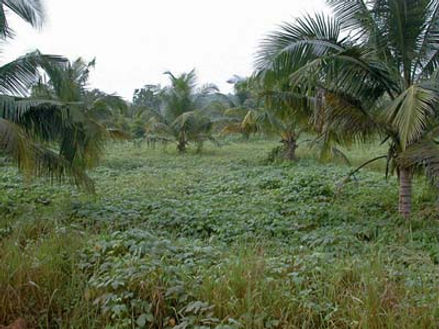Cover It Up!
Minimizing bare soils is one of the proponents of “Conservation Farming”. One way to go about this is by using vegetative cover crops, also known as "green manure".
Cover crops involve leaving particular crops on the surface of the soil, allowing to them to both cover the soil, reducing erosion, and add nutrients [1]. A solution for low-income farmers is use of a low management and easy to grow cover crop like the velvet bean, Mucuna pruriens. This crop is a perennial widely used in the tropics and subtropics as both a green manure and for animal forage, and is highly thought of as an anti-erosion crop [2].

Velvet bean used as an intercrop in Benin, West Africa. source
What's the cost?
Individual practices of such soil conservation measures with highland farming have been shown to be profitable to the farmers. The use of cover crops has reduced the need to use pesticides or herbicides and has reduced the costs of fertilization. The labour cost of sowing and tending cover crops is dwarfed by the benefit from the potential increase in yield. And remember how one of the reasons behind tillage was to reduce weeds? Cover crops take up the space weeds make for themselves. This results in less weeds and therefore less weeding: a lower labour cost for the farmers [3].